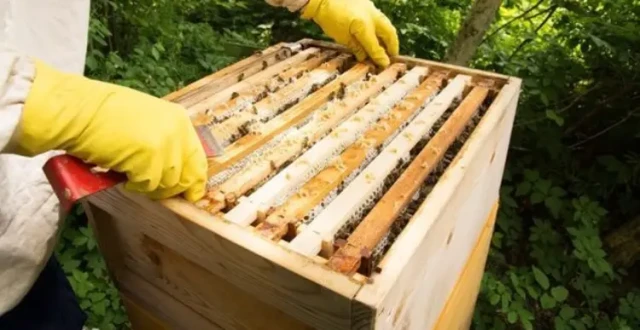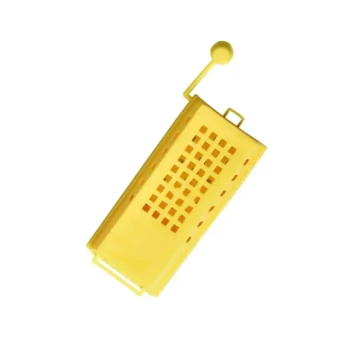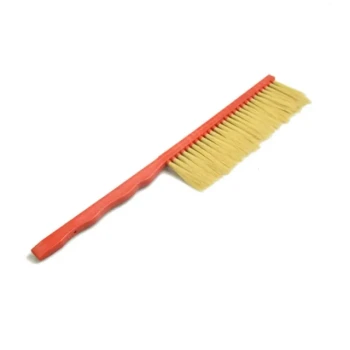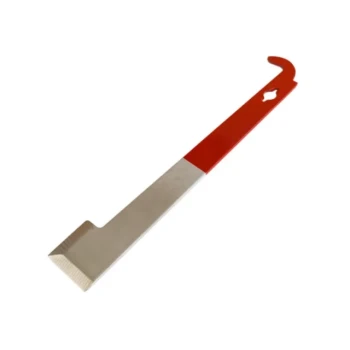Каждый пчеловод знает, что инструмент для улья — это больше, чем просто кусок металла — это продолжение его рук. Независимо от того, управляете ли вы сотнями ульев или ухаживаете за колонией на заднем дворе, выбор правильного инструмента для улья может сделать осмотры более плавными, уменьшить беспокойство пчел и продлить срок службы вашего оборудования. Это руководство подробно описывает ключевые различия между инструментами с J-образным крюком и стандартными инструментами для улья, факторы, которые следует расставить в приоритете в зависимости от вашего стиля пчеловодства, и советы экспертов по техническому обслуживанию.
Основы инструментов для улья для современных пчеловодов
Анатомия инструментов для улья: J-образный крюк против стандартных конструкций
Инструменты с J-образным крюком
- Лучше всего подходят для: Точных задач, таких как подъем рамок и соскабливание прополиса
- Конструкция: Длиннее (около 10,5 дюймов), из нержавеющей стали, с тонким загнутым концом
- Преимущества: Достает глубоко в корпуса улья, уменьшает повреждение рамок и минимизирует беспокойство пчел
Стандартные плоские инструменты
- Лучше всего подходят для: Общего соскабливания, раскалывания корпусов улья и сильных скоплений прополиса
- Конструкция: Короче, с прямым краем и изогнутым скребущим концом
- Преимущества: Универсальны для базовых задач, часто более доступны по цене
Ключевой вывод: Инструменты с J-образным крюком превосходны в коммерческих условиях, где важна скорость и сохранение рамок, в то время как стандартные инструменты подходят для любителей, которым нужна многофункциональность.
Ключевые факторы, на которые следует обратить внимание
-
Тип улья
- Ульи Лангстрота: Инструменты с J-образным крюком упрощают осмотр рамок в глубоких корпусах.
- Ульи с верхней планкой или Flow Hives: Стандартные инструменты хорошо подходят для легкого обслуживания.
-
Эргономика
- Ищите текстурированные ручки и сбалансированный вес, чтобы уменьшить усталость рук во время длительных осмотров.
-
Долговечность
- Нержавеющая сталь устойчива к ржавчине и выдерживает частое использование — это критично для коммерческих пчеловодов.
Применение в реальном мире и сценарии использования
Тематическое исследование: Эффективность J-образного крюка в коммерческих пасеках
Коммерческие пчеловоды часто обслуживают сотни ульев еженедельно. Исследования показывают, что инструменты с J-образным крюком:
- Снижают затраты на замену рамок за счет минимизации расщепления древесины.
- Ускоряют осмотры на 15–20% благодаря более легкому подъему рамок.
Преимущества стандартного инструмента для пчеловодов-любителей
Для тех, у кого 1–5 ульев:
- Более низкая первоначальная стоимость и простота соответствуют нечастому использованию.
- Эффективны для соскабливания воска во время сбора меда (например, совместимость с Flow Hive).
Совет профессионала: Подбирайте инструмент под свою самую частую задачу. Если вы постоянно боретесь с прополисом, скребущий край стандартного инструмента идеален.
Советы профессионалов по обслуживанию и долговечности инструмента
-
Чистите после каждого использования
- Счищайте прополис жесткой щеткой и горячей водой, чтобы предотвратить распространение болезней.
-
Правильно храните
- Держите инструменты сухими, чтобы избежать ржавчины; кожаный чехол защищает кромки.
-
Обращайтесь осторожно
- Используйте нежные, намеренные движения, чтобы избежать беспокойства пчел или сгибания инструмента.
Знаете ли вы? Хорошо обслуживаемый инструмент для улья может прослужить более десяти лет, что делает его одним из самых экономически эффективных вложений в пчеловодство.
Готовы оборудовать свою пасеку?
Независимо от того, являетесь ли вы коммерческим пчеловодом, оптимизирующим эффективность, или любителем, заботящимся о своем первом улье, HONESTBEE поставляет долговечные, эргономичные инструменты для улья, разработанные с учетом ваших конкретных потребностей. Изучите наш ассортимент, ориентированный на оптовую торговлю, чтобы ваши колонии процветали — потому что правильный инструмент имеет решающее значение.
Изучите решения HONESTBEE для пчеловодства сегодня →
Связанные товары
- Нержавеющая сталь улей пчела курильщик пчеловодство курильщик для оптовой
- Профессиональная клеточка для маток с раздвижной заслонкой и пробкой-кормушкой
- Садовый улей для пчел с медовым потоком Проточный улей Лучший улей для начинающих
- Пластиковая ручка Однорядная щетка для пчел из искусственного волокна
- Выдвижной китайской королевы выращивания прививки инструменты оборудование
Связанные статьи
- Как правильно использовать пчелиную щетку: Защита пчел и повышение продуктивности пасеки
- Ловля роев для начинающих пчеловодов: Пошаговое руководство по безопасности для вашего первого успешного захвата
- Как ухаживать за пчелиной коптильней для оптимальной работы и безопасности
- Как безопасно переселить ульи: Научно обоснованное руководство для пчеловодов
- Как этично собирать мед без ущерба для выживания пчелиной колонии




















